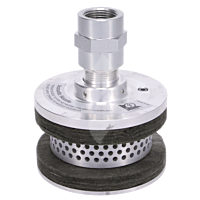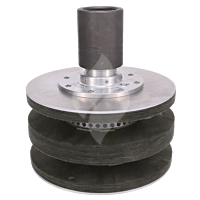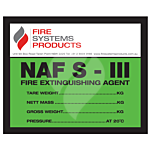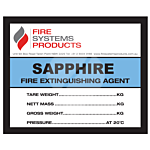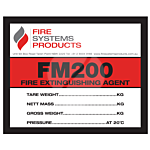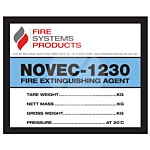Acoustic Discharge Nozzle
Accoustic Nozzles
Ansul & Hygood Acoustic Nozzles are designed to reduce the sound pressure (noise level) emmited by a discharge of an Inergen system. If you already have an Inergen system installed, you will want to invest a small amount into these nozzles to allow your existing system to protect your data centers most crusial assets, the data that resides within the servers on the HDDs themselves.
Benefits of Acoustic Nozzles
Inergen has long been associated with successfully protecting Datacenters from fire, so why do we need Acoustic Discharge Nozzles for Gas Suppression Systems?
The Data Stored in Datacenters is still stored mainly on Hard Disk Drives. These HDDs have increased storage density, allowing far greater amounts of data to be stored within the same physical size device. The increased density of HDDs has required the internal data reading/writing heads to become far more accurate, which means more sensitive. Sound Pressure can cause relatively significant movement of these heads, potentially causing the HDD read-write heads to skip across tracks, interfering with data in other locations on the drive, leading to data corruption. Modern HDDs are pretty good at capturing minor errors and correcting them before corruption occurs or shutting down if it does. Still, if the system designed to save your data center can potentially damage data, something needs to be done. The intention of Acoustic Discharge Nozzles is to mitigate some of this associated risk.
The Acoustic Discharge Nozzle is designed as a solution for the data center and related markets where discharge noise of the Inergen Gas Suppression system can cause loss of data, functionality or interruptions of services due to the sound pressure and sound power of typical discharge nozzles.
The sound-absorbing materials utilised within the acoustic nozzles were selected based on extensive research and physical testing through hundreds of suppression system discharges, resulting in superior sound power performance and suppression capabilities rivalling standard suppression nozzles.
The area coverage and flow capabilities, as tested with the iFLOW fire suppression system
hardware to ANSI UL 2127 nozzle performance tests and in compliance with NFPA 2001, are as follows:
- Maximum protected height per nozzle row: 6.1 m (20 ft)
- Area coverage: 9.75m x 9.75 m (32 ft x 32 ft)
- Agent flow rate capabilities: up to 142 m3/min (5000 cfm) characterised the sound power of the new acoustic nozzle across the OTO bands from 500 Hz to 10K Hz.
